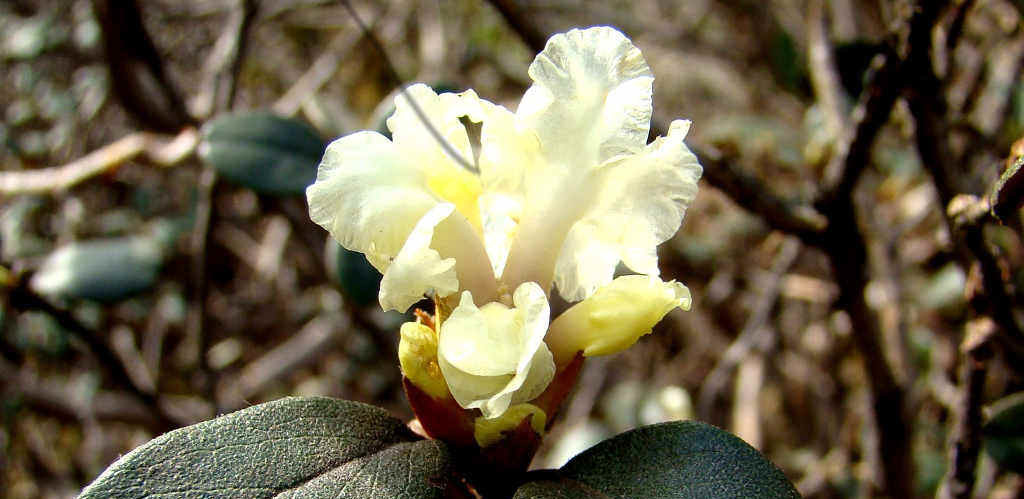
Rhododendron anthopogon (Brass)
Rhododendron anthopogon (Brass) is a low-growing, aromatic shrub native to the high-altitude regions of the Great Himalayan National Park (GHNP) and surrounding areas. Commonly referred to as “Brass” in local parlance, this rhododendron species plays a significant ecological and cultural role in Himalayan biodiversity.
Growing at elevations between 3,000 and 5,000 meters, Rhododendron anthopogon (Brass) forms dense mats across alpine slopes and rocky terrains. The shrub is characterized by small, leathery leaves and clusters of creamy-white to pale yellow flowers that bloom in spring. The entire plant emits a strong, sweet fragrance—especially when leaves are crushed or bruised.
| Local name | Brass |
| Botanical name | Rhododendron anthopogon |
| Family | Ericaceae |
| Description | It is a small shrub, found at an altitude of 3000-4300m |
| Distribution | It is frequently found on the alpine slopes in all the valleys of GHNP. |
| Flowers & Fruits | June-July |
| Uses | Leaves are used as an alternative of tea with high medicinal value that can protect from severe cold. |
In the GHNP, Rhododendron anthopogon is more than just part of the natural flora. It supports high-altitude pollinators like bees and butterflies and helps in stabilizing soil on steep alpine slopes. Locals also use its dried leaves in traditional rituals and herbal infusions, valued for their warming and medicinal properties.
This hardy plant is an important indicator of alpine ecosystem health. Its ability to thrive in extreme conditions and poor soils makes it vital for preventing erosion and maintaining alpine biodiversity.
As a protected species within GHNP, Rhododendron anthopogon (Brass) contributes to the region’s natural beauty and ecological balance, while also supporting cultural practices rooted in the local communities.



